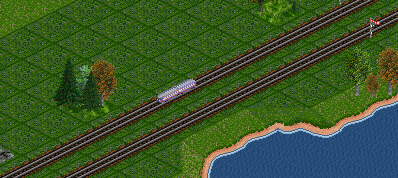-
Contents
- In real life
- DBSetXL 0.82
In real life
"FDt" is an abbreviation for "Fernschnellzug" (long distance express train, abbreviated "FD") operated by a DMU/EMU ("Triebwagen", hence the "t"). These trains were put into service in the early 1930s to provide exceptionally fast connections from Berlin to other large cities in Germany. The rolling stock consisted of various types of DMUs such as the famous "Fliegender Hamburger" (Hamburg flyer - in reference to the high speed). Such trains ran (among other destinations) to Hamburg, Cologne or Munich. The services were stopped in 1939 with the outbreak of World War II.
One very remarkable feature of these services are the scheduled speeds. These trains, not running on specific high-speed lines, reduced travel times which became impossible to reproduce for many decades after the war. Traveling between Berlin and Hamburg took about two hours, this was not surpassed until the millennium. Trains running to Munich needed about seven hours, this was only surpassed in 2018 after building dedicated high-speed lines.
DBSetXL 0.82

The different types of fast DMUs (Schnellverbrennungstriebwagen - literally "fast combustion multi-unit") are modeled as one type called VT-137 in DBSetXL. There were DMUs with two, three or four cars, which were technically very similar.

The ET-11 EMU is a distant relative of the EMU types, being meant to run on electrified lines. That was the case only for the line between Stuttgart and Munich at the time.
